Cucumbers are delicious, both raw and cooked. You can save money and get better quality fruit by growing your cucumbers at home rather than purchasing them at the supermarket. Planting and caring for cucumber seeds properly can enhance the chance of germination, speed plant growth, and optimize harvest output. Below we will learn how to grow cucumber plants faster and the best tips for getting better yield, fruiting, and flowering.
How to grow cucumber plants faster
Take care of soil preparation and location
Choose a spot that receives at least 6 to 8 hours of sunlight daily since cucumbers thrive in this environment. Choose loose, loamy soil that drains well and has lots of organic matter; enhance its nutritional content by mixing in old compost or manure. It is not unusual for their optimal soil pH to be around 7.0.
To get the most out of your cucumber crop, shape your bed into a series of mounds at least 12 inches and 3 inches tall, and distance them three feet apart. The plants, whether vining or bush kinds, will spread out over the mounds as they mature, taking advantage of the additional space. Cucumber vines need to be planted at a distance of no more than 12 inches from the supports (such as trellises or tomato cages).
Feed your cucumber plants well
Every 100 square feet of garden needs 6 cups of 10-10-10 vegetable garden fertilizer. Since cucumbers have a reputation for demanding very fertile soil, it’s common practice to amend the soil with fertilizer before planting to speed up the growth of the plants.
Make sure there is pollination
Male and female flowers appear on separate cucumber plants; pollination is required for fruit to form. Never spray pesticides on blossoming cucumbers; ensure they remain exposed so bees can pollinate them. As a last resort, you can manually cross-pollinate your plants by transferring pollen from male (solo) flowers to female (in-florescence) blooms using a cotton swab.
In case you missed it: How to Start Cucumber Farming/Growing in Philippines: Check How this Guide Helps Beginners
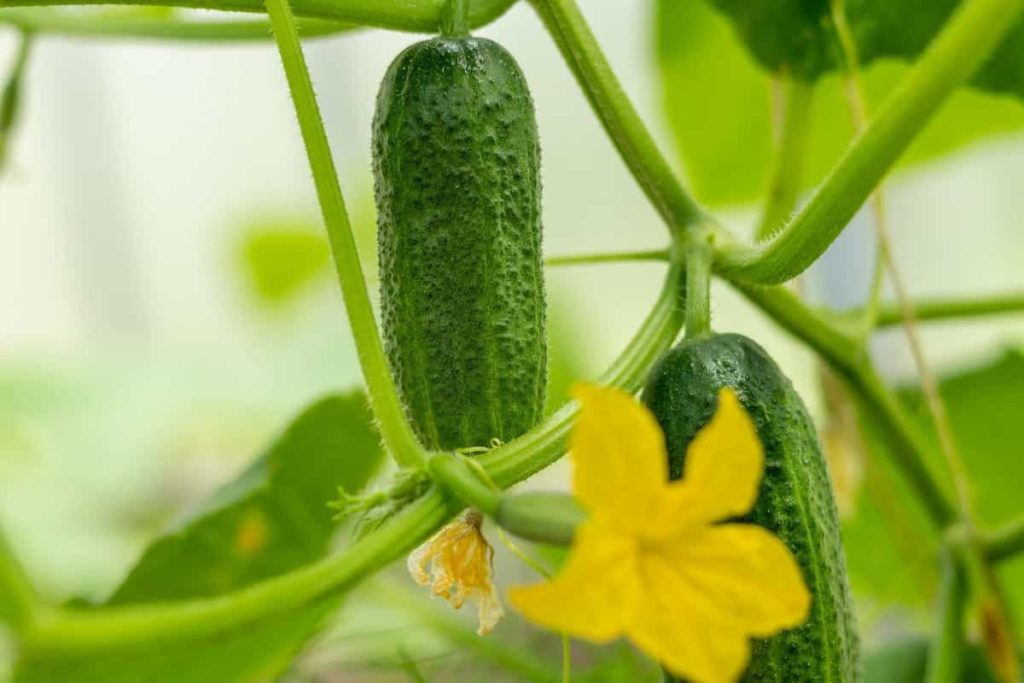
Sow seeds by following instructions and mulch carefully
Once frost risk has gone, sow cucumber seeds. Make a small hole in the plastic bag by cutting or tearing it, and tuck the cucumber seed about half an inch below the soil. Separate several cucumber plants by at least a foot in height and width. Cover the barren ground with a layer of black plastic mulch. Put down mulch a week before the latest expected frost in your area. Mulch increases soil warmth, and faster germination of cucumber seeds (by around seven days) is a direct result of this.
Water your cucumber plants carefully
Maintain a 3- to 4-inch water-soaked soil depth every day, checking for indications of germination as you go. A cucumber seed will sprout in only three days when planted in soil at 80 degrees Fahrenheit or above. However, the germination process might take up to ten days when planted in soil with lower temperatures. As a result, the black plastic tarp is vital for efficient cucumber cultivation.
Once your cucumber plants have become established, as seen by the growth of many sets of leaves, you can cut back to watering them once a week. Reduce the number of times you water, but be sure to water deeply enough to hydrate the soil by at least 8 to 12 inches. This stimulates the development of extensive root systems, which expedites the plant’s overall growth.
Support your cucumber plants
A trellis or cage set up at your cucumber plants’ planting location can help them thrive. This guarantees cleaner and more uniformly formed fruit. Two or three cucumber vines can readily grow around the outside of a cage that is 15 to 20 inches in diameter. You can maximize your garden’s efficiency by installing a vertical support system.
Manage pests and diseases of your cucumber plants
As a result, the seedlings’ development can be stunted even early if the pests are not eliminated. Aphids, cucumber beetle, and squash bugs are some of the pests that can damage your cucumber plants. Pests can be avoided by frequent inspections and the use of organic neem spray. Powdery mildew, fungal infections, and mosaic are a few other threats to cucumber plants. Ensure enough drainage in the soil and ventilation for the plants to prevent this problem.
In case you missed it: Best Practices to Grow Cucumber at Home: Check How this Guide Helps Beginners

Harvest your cucumber plants for a fast yield
Cucumbers should be picked at the perfect moment to avoid a bitter flavor. Cucumbers are at their most delicious when they are picked at the peak of firmness, crispness, and green color; if they begin to turn yellow, it can be too late to eat them. Burpless cucumbers should be picked when they reach about ten inches in length; slicing cucumbers and dills should be picked when they reach about six inches in length, and pickled cucumbers should be picked when they reach about two inches in length.
Cucumbers should be removed from the plant with garden shears just above the main stem. Never yank the fruit from the vine; doing so puts unnecessary strain on the plant, killing or stunting future cucumber production. Maintaining a steady picking pace as young cucumbers mature is essential for maximum yield. The plant will be encouraged to keep bearing fruit all season long. Cucumbers can be kept fresh in the fridge for up to ten days if stored in an airtight container. Cucumbers, a classic pickling candidate, have a shelf life of up to four months in the fridge after they’ve been pickled.
Frequently asked questions about Cucumbers (FAQ)
How do you speed up cucumber growth?
Cucumbers need daily average temperatures in the mid-70s F to thrive. Cucumbers need full light, rich soil with a pH of 6.0 to 6.8 and a space of 36 to 60 inches (12 inches for trellised plants) to thrive. Mix in old compost or other organic debris to improve native soil. The rapid development of cucumbers is possible with little effort. Always give them a full inch of water once a week. Feeding plants regularly with plant food that dissolves in water can maximize the yield of your garden.
Straw mulch should be applied while the soil is warm to protect the fruit against contamination and slugs and insects. Cucumbers are ready for picking when they reach a certain size. Black plastic can warm the soil by 3 to 4 degrees in locations with a lengthy, chilly spring. Mulch with wheat straw, pine straw, chopped leaves, or your preferred organic mulch soon after planting if you do not use black plastic. If it is very cold, you can put off mulching until the soil can be warmed by the sun.
For bush varieties and vines not trained to support, mulch is crucial for maintaining clean fruit. Straw mulch can also deter slugs and cucumber bugs by making them feel unpleasant walking on it. The use of a trellis to support your vines is highly recommended. This not only conserves space but also keeps the fruit clean. Two or three vines can be supported by a cage with a diameter of 12 to 18 inches, constructed out of 4 or 5 feet of welded wire fence or hog wire. Cucumber vines can quickly and easily climb wire as the plant develops.
Cucumbers don’t need much attention and develop rapidly. The soil needs an inch of water every week to hydrate constantly. Oddly shaped or tasteless fruit is the result of insufficient or irregular moisture. If you want to avoid watering the leaves of your cucumber plants, use a soaker hose or drip irrigation. This aids in warding off leaf-borne diseases that can otherwise kill the plant. High-quality plant food is equally as necessary as good soil for optimal growth.
Why are my cucumber plants growing so slow?
Cucumbers are simple to grow from seeds placed straight into the ground, although gardeners with limited growing seasons may benefit from transplants. Unfortunately, cucumber plants are sensitive to root disturbance and may die from transplant shock. This physiological issue causes cucumber transplants to grow and mature slowly, negating the timing advantages of planting seedlings instead of seeds. Rather than using transplants, sow seeds directly into the soil to avoid this problem.
In case you missed it: Vegetable Growing Season Chart in India: Sowing Guide, Germination and Planting Calendar
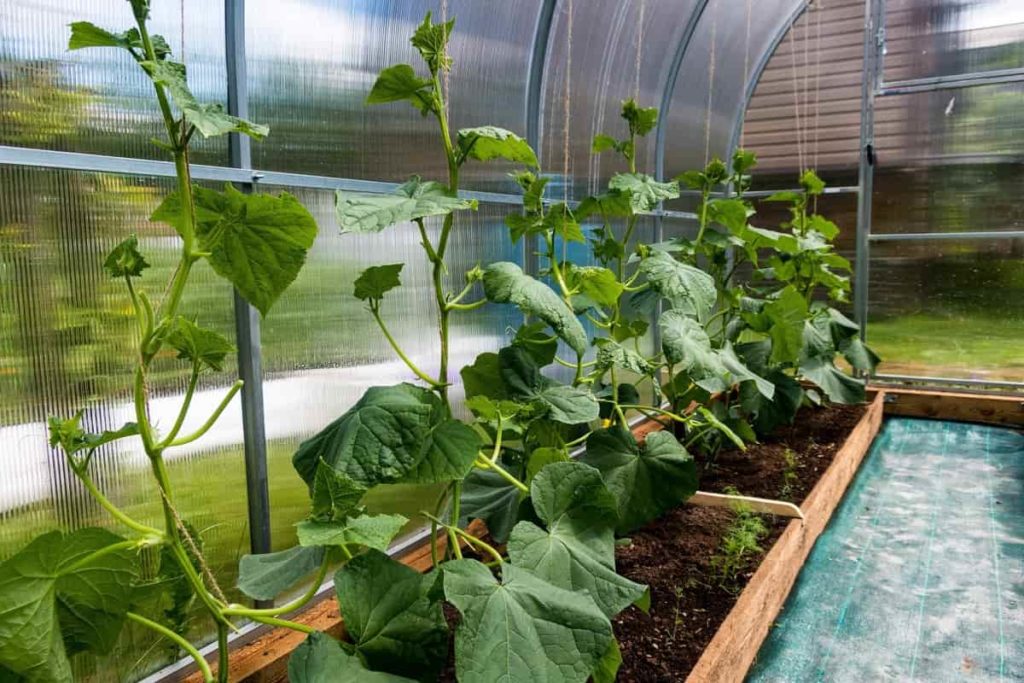
They’ll inform you if cucumber vines don’t get enough water during irrigation. Your vines can suffer from a lack of water if they wilt or develop more slowly than desired. Like other plants, cucumbers in the ground prefer deep, profound soakings once or twice a week over light, shallow watering daily. A mulch covering, such as shredded leaves or straw, can help maintain consistent soil moisture for cucumbers planted in the ground. Growing cucumbers in containers require daily, thorough watering throughout the hot summer months.
Don’t use “splash and dash” techniques that don’t adequately saturate the soil and leaves. Aim the hose at the soil and let the water soak through the drainage hole. Cucumbers need many nutrients to grow well on vines. Your vines may require a nutritional boost if their leaves are a light green or yellow, particularly the older ones. A few inches of compost added to the garden in the spring should be sufficient nourishment for your plants.
A monthly application of liquid organic fertilizer should be sufficient unless you see the plants turning yellow as summer approaches. A soil test will inform you whether you need to add organic granular fertilizer to your planting beds before you plant your seeds. Vine crops grown with excessive nitrogen produce few blooms and no fruit.
How long do cucumber plants take to grow?
Depending on the cultivar, cucumbers can be picked anywhere from 50 to 70 days after planting. Size-based harvesting is recommended for optimal efficiency. For maximum flavor, pick your cucumbers before they develop. Cucumbers get bitter as they mature, so harvest them before they turn yellow.
Gather by severing the stem a quarter of an inch above the fruit. If you must harvest the produce by trampling the vines, please do it as little as possible. Cucumbers can only develop to their full flavor and potential if they are picked regularly. Because fruiting is so taxing on a plant, a delay in harvesting can lead to lower quality goods and fewer plants overall. Cucumbers should be refrigerated after harvesting.
Should you water cucumbers every day?
If you want your cucumbers to thrive, you should water them deeply once a week or more often if the weather is scorching for many days. Oddly shaped or tasteless fruit may result from inadequate or irregular moisture.
How do you fertilize cucumber plants?
Cucumbers planted in containers benefit from compost added to the potting soil. You can also use a pelleted fertilizer with an N-P-K ratio of 2-3-6, which releases its nutrients over time. You should use one tablespoon per container when planting your cucumbers, or the rate specified on the label if it differs from this one, and again when the plants develop their first true leaves. Those are using pots larger than 12 inches in diameter or planting many plants in a single pot should increase the quantity proportionately.
Fertilize cucumbers once a week using a water-soluble, low-nitrogen, high-potassium fertilizer after they develop their actual leaves. Mix 1/2 tablespoon of fertilizer with 1 gallon of water once a week, or as directed on the instructions, to apply weekly. Put on gloves and goggles when handling fertilizers. Well-aged compost is ideal for fertilizing cucumber plants. Compost has a very low nitrogen content—just 2%—and its nitrogen depletes gradually over many years.
Vegetative growth will not explode in the absence of fruit when using compost. Instead, it enriches the soil with nutrients that will be there for the long haul. In addition to enhancing soil quality by reducing compaction, compost also facilitates aeration, drainage, and disease resistance. Without worrying about an overabundance of nutrients, compost can be used yearly as mulch or added to the soil before planting. This soil improver gives cucumbers critical macro- and micronutrients.
In case you missed it: How to Grow and Care for Devil’s Ivy – A Step-by-Step Guide for Beginners
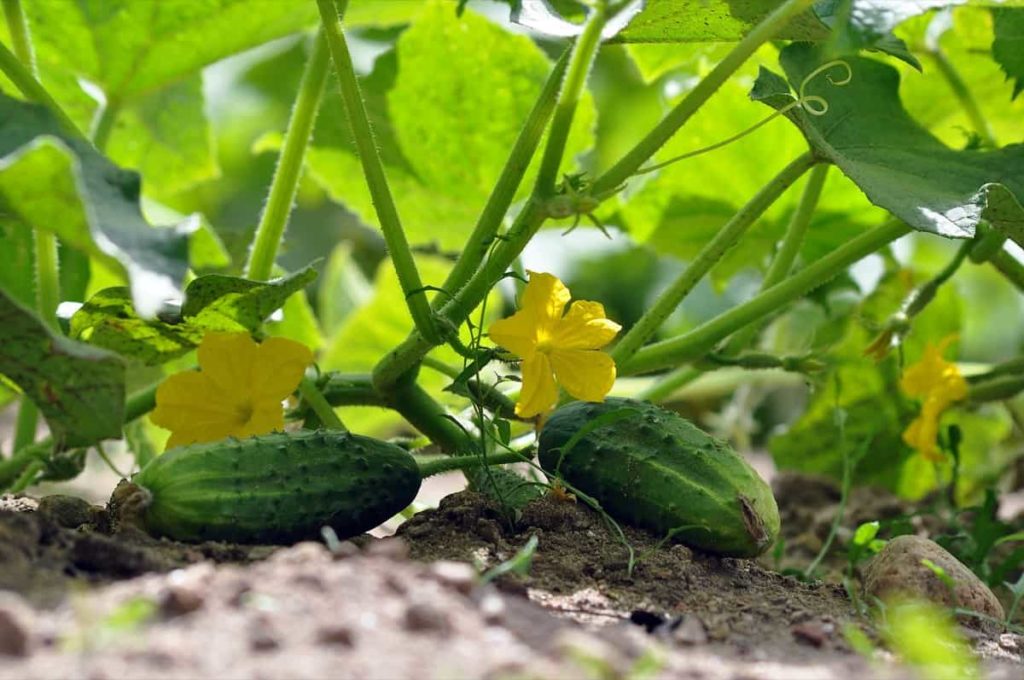
Mulch made of compost is useful for preventing weeds from crowding out the cucumbers and preventing them from starving. Composting is easy, and most garden shops and nurseries sell bagged compost for easy transport or bulk compost for cheaper. Cucumbers can easily get overfed on all-purpose formulations due to their high nitrogen content. Packages with the numbers 20-20-20 or 30-30-30 are an example.
They could foster development, but maybe not as you’d like. Due to their low nitrogen needs, cucumbers can be negatively affected by high-nitrogen fertilizers, which cause excessive growth at the expense of the fruit. Cucumbers given nitrogen focus their energy on developing stems, leaves, and shoots rather than flowers and fruit. Fertilizers high in nitrogen can prevent cucumber blossoms from opening, which leads to no fruit.
How many cucumbers will one plant produce?
The average healthy cucumber plant will yield ten big cucumbers or 15 mini cucumbers in a three-week harvest window. These idealistic averages are based on professionally managed large-scale plantings, but gardeners can achieve similar results by adopting cultural practices that boost cucumber plant yield.
What soil do cucumbers like?
Like many other common garden plants, cucumbers thrive in almost neutral soil with a pH of around 6.0 to 7.0. Soil can endure acidic or alkaline pH if it’s fertile and drains well. Work 5–10 pounds of dolomitic lime per 100 square feet to neutralize acidic soil. There is a greater requirement for lime on clay soils and a lesser on sandy ones. Since changing the soil pH with dolomitic lime takes time, it is best to apply it in the autumn.
Adding 1–2 pounds of elemental sulfur per 100 square feet of soil can reduce the pH of very alkaline sandy soils. Heavy clay soils benefit from adding 4 to 5 pounds of elemental sulfur per 100 square feet of land. The soil can be harmed by applying too much lime or sulfur. You should only add them after testing the soil’s pH using a kit available at garden stores and nurseries. Soil pH should be changed gradually over many years.
Do not use caustic quicklime or hydrated lime; use dolomitic lime. Cucumbers like slightly alkaline, well-drained, sandy loam soil that is rather light in texture. The soils are more conducive to plant growth since they warm up more quickly in the spring and provide ample oxygen to the plants.
In case you missed it: How to Make Cow Dung Manure Compost: A Step-by-Step Guide to Use in Your Farm/Garden
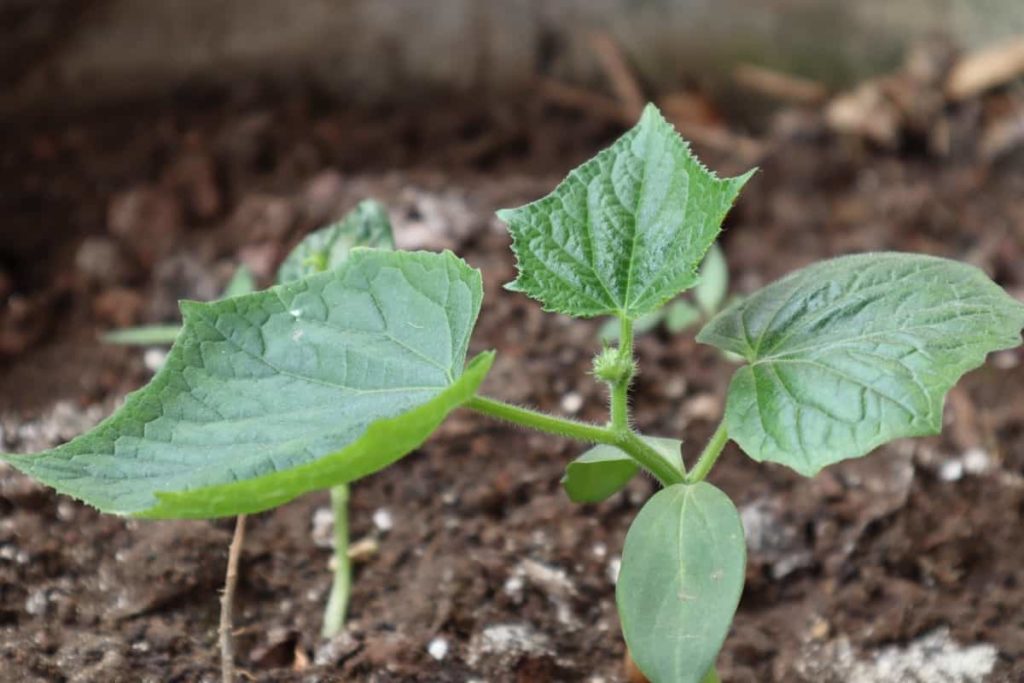
Furthermore, cucumbers need much food. Before planting cucumbers in the spring, amend the soil with compost or manure by spreading 1/2 to 1 inch over the planting area and then digging it to a depth of 6 inches. One or two teaspoons of 6-10-10 fertilizer should be applied to each hill while planting. After the plants have bloomed, side-dress them with a serving of ammonium nitrate (33-0-0), or about one tablespoon per hill. Just reapply three weeks later.
Conclusion
Cucumbers can be grown quickly and easily from seed. With detailed directions, you can’t fail, no matter what type you try. Plant a cucumber plant now for a healthy summer.
- Budget Friendly Sheep Shed Ideas: Cheap and Low-Cost Tips
- How Much Do Cattle Farmers Make: Revenue Streams in Cattle Farming
- Management Pests and Diseases in Your Cotton Field
- Sheep Farming Business Plan for Beginners
- Aquaponic Farming at Home: A Step-By-Step Guide
- Profitable Village Farming Business Ideas in 2024
- High-Yield Aquaculture: Fast-Growing Fish for Farming
- Effective Fish Pond Construction Techniques for Beginners
- Irrigation and Water Management in Pineapple Farming
- Blossom to Harvest: Mastering Flowering and Pollination in Papaya Farming
- Pig Fattening Essentials: From Selection to Sale for Beginners
- Raising Wagyu Cattle: A Complete Guide for Premium Beef Production
- Soil Types and Their Water Holding Capacity
- Optimizing Irrigation Schedules for Coconut Groves for Enhanced Yield
- Espresso Your Garden: Coffee Grounds for Healthier Acid-Loving Plants
- The Best Soil Mix for Snake Plants: How to Mix Your Own Snake Plant Soil
- Green Thumb Success: Expert Tips for Cultivating Greenhouse Beans All Year Round
- Bloom All Year Round: The Ultimate Guide to Indoor Hyacinth Care
- Eco-Friendly Gardening: How to Make Liquid Fertilizer from Kitchen Waste
- Ultimate Guide to Grow Anise in Pots: Explore Seed Propagation to Harvesting
- Guide to Raising Chester White Pigs: Discover Breed Facts to Growth Management
- Mastering the Elegance: The Ultimate Guide to Weeping Cherry Tree Care, Planting, and Maintenance
- Ultimate Guide to Planting Garlic in Grow Bags: Growing Strategies for Beginners
- How to Fix Spider Plant Leaf-Related Problems: Natural and Organic Remedies
- 10 Reasons Why Your Tulsi Plant is Shedding Leaves: Home Remedies and Solutions
- Optimizing Growth and Yield: The Advantages of Palm Bunch Ash Fertilizer
- Utilizing Neem Oil Extract as a Natural Pesticide for Hydrangea
- From Soil to Harvest: Various Ways in Which Farmers Can Use AI Tools
- Steps to Encourage and Induce Citrus Flowers: A Comprehensive Guide
- How to Fix Snake Plant Leaf-Related Issues: Natural and Organic Remedies
- Transform Your Garden into a Fragrant Oasis with Raat Ki Rani (Night Blooming Jasmine)
- Discover the Ideal Chicken Breeds for Philippine Farms
- How to Create a Poultry Egg Farm Business Plan for Profits
- Grow Lemon Cucumbers Like a Pro: Insider Techniques for Bountiful Yields
- Ultimate Guide to Caring for Your Pink Princess Philodendron: Tips for Thriving Variegation
- Areca Nut Profit Per Acre: Calculating Yield and Cost of Cultivation

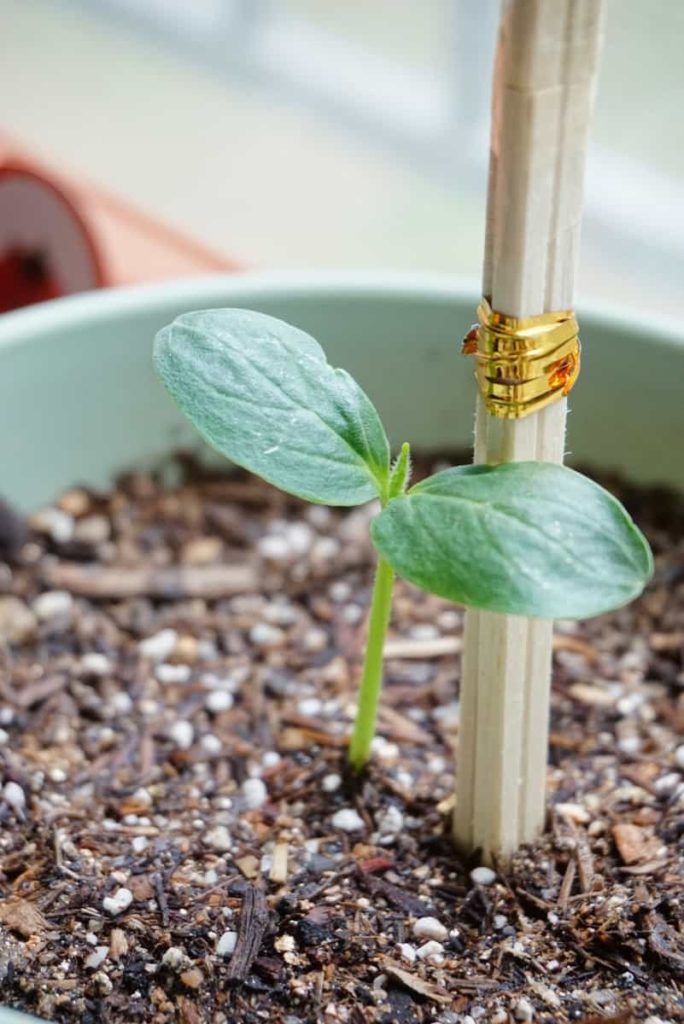
The article is indeed informative especially for beginners. Thanks for such well researched info. This is one way to fight food insecurity.